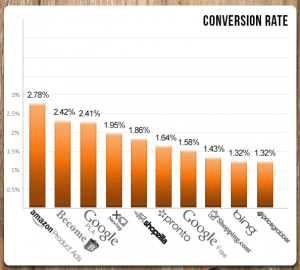5 CSE Management Questions Answered

We asked, “What do you want to learn?” Fortunately, you answered and it turns out there remains some fuzzy areas when managing your CSE campaigns. Well, it’s a good thing that’s our specialty.
Unfortunately, I can’t tell you that if you spend X amount of hours on Y CSE, then you’ll be in the clear. It’s completely relative.
The amount of time you should spend on each account is dictated by essentially 2 things: how much traffic and order volume you’re receiving and how much you’re spending budget-wise on the CSE. You should of course be spending more time on the CSEs that you’re investing more money into. Similarly, your more active campaigns require more attention than those that may be stagnant.
 In terms of your time investment with specific CSEs, like, for example, Google Shopping vs. Nextag, there is no clear cut response. Sure your Google Shopping campaign may seem like a bigger deal than its Nextag counterpart, but it really just boils down to the relative activity of each and how much money you’re throwing down on the table for each.
In terms of your time investment with specific CSEs, like, for example, Google Shopping vs. Nextag, there is no clear cut response. Sure your Google Shopping campaign may seem like a bigger deal than its Nextag counterpart, but it really just boils down to the relative activity of each and how much money you’re throwing down on the table for each.
Obviously the more you manage, the less amount of time you’ll have to spend on a given campaign because your familiarity with a CSE will let you know exactly what you need to do. Fundamentally speaking, your time will be spent checking product reports on products on the brink of being cut, making sure your high-bid products are performing up to par, and lowering bids of products that aren’t doing as well as you thought.
Let’s jump ahead to the future and say it’s already August. Of the many products you offer, you happen to sell Halloween costumes. As a rule of thumb, place increased bids on your costumes whenever people start to shop for them. This would be about 6-8 weeks before Halloween up til about a week before October 31 (because orders must arrive before the big day). Be sure to monitor them carefully several days before the holiday to ensure that the traffic influx may have ended or if there are indeed some products that favor last-minute shoppers.
The next logical question is how much should you up-bid on seasonal products. Well, your bids obviously depend on performance, and so you can start with a 5 cent bid above the minimum and assess your rankings from there. You should indeed raise bids towards peak shopping times, usually around 15 cents above the minimum (but no more). However, yes, you would typically suppress out of season products, bring a bid below the minimum, or drop it as far down as possible.
And as always, your bids should of course be relative to your conversions. If just some of your costumes are converting, up-bid only those.
More often than not, we find that the majority of a given client’s ad spend is going towards about 10% of their products. That’s a significant minority. It simply doesn’t make sense to look at all 10,000 products, for example, if 90% of cost is going to only a small amount of them.
Thus, you really don’t need to look at the “in betweens” too much because those should be somewhat monitored by your category-level and brand-level bid strategies. Just keep focusing on the 2 ends of the spectrum: top performers and the poor performers.
You can find trends in products that haven’t gotten any traffic for months and try up bidding them by 10 – 20 cents each week until they get traffic to see if they would be successful or not. But this is only worth testing if you have budget to spare and if those items are usually bought in relatively high average order amounts.
Finally, if you see there’s a ton of products that never get traffic, and they also never get traffic on your site, it might make sense to streamline your inventory so you can focus on what’s working, or figure out if you can do something a bit dramatic for sales of those items to start happening.
In terms of product bidding vs. bidding rules, particularly with PriceGrabber’s bidding tool, you should be using both in conjunction. Try to prioritize those rules by having the most specific at the top so that the smaller rules get taken into account before the more encompassing, generalized rules. The relative importance of those rules is up to you, but we’ve seen the habit of putting a brand that never sells at the top of the list so that it always take precedence. You should also be putting price floors towards the top so that you don’t overbid inexpensive items. However, remember that your specific product bids will always override bidding rules.
Additionally, if all your rules are category rules, it doesn’t matter what order they’re in since there will be no product crossovers, or the same product in multiple categories. The only time the order of bidding rules matters is if multiple rules (brand and category) apply to a given product. However, you should not be making rules for just one product.

Always employ the 30/30 rule. This means that you should be considering cutting a product if it doesn’t convert to a sale after 30 days or 30 clicks. After this period, you must assess how much ad spend you already invested in this product and ask yourself if this product were to convert no, would it be profitable at this point? If the answer is no, then you probably spent too much on that product’s clicks. Generally speaking, you don’t cut products before 30 days.
Props to Senior Account Manager Jeff Coleman for his insight.
More questions anyone? Unleash your curiosity at [email protected]
